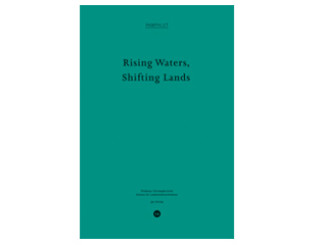Book chapter
Water Urbanisms spanning the globe: the Scheldt Estuary & Mekong Delta
- Shannon, Kelly|Meulder, Bruno De

Water and mud. Erosion and sedimentation. Profits and perils. Natural and social forces. Water resource management and urbanization. Human culture and civilization requires the control and appropriation of water. The capture, storage, and distribution of water inextricably bind physical and social processes into a thorny relationship between nature and society. Throughout history, the complex cultural and power dimensions of water (also the generosity of past societies when it comes to the access to and distribution of water) has reflected ways in which society is organized. The geography of human settlement is highly dependent upon the distribution of available sources of fresh water, and common sense logic and the interrelation of cities and water also includes the possibility of water as a means of transport and defense. Therefore, water – especially in estuaries and fertile deltas ‒ has a long-standing relationship to development, including urbanization (even if paradoxically such fertile deltas are not very suitable for building).
Today’s era of rising seas and climate change bring new challenges regarding flooding. A higher frequency of intensive rains, coupled with more impervious areas of territories, generates flow rates and volumes that are larger than the capacity of the conventional, controlled water systems of the now urbanized, managed, and “tamed” estuaries and deltas. There is clearly a need for a paradigm shift that incorporates resilience. Working with the dynamics and logic of nature instead of defending against them seems the key to such a reorientation. A redivision of labor between engineered and natural processes undoubtedly positions ecology as the major organizing basis for urban design. Consequently, the capacities of the existing natural logic of territories will be addressed more profoundly than done previously and, thus, before engaging with engineered solutions. A cross-scalar and cross-sectoral “soft engineering” approach (meaning working with the hard almost irresistible forces of nature) can reduce or mitigate the likely impact of increasing natural disasters, while revised (re)development of cities can be steered by new robust interplays of landscape, infrastructure, and urbanism. Mitigation can become proactive rather than reactive if urban design and planning anticipate risk and exposure ‒ designing for resilience by remolding landscapes and (re)constructing settlements so they bend with hazards but do not break.
There are two highly contested territories that are now testing grounds for RUA to develop “water urbanisms” for the 21st century. On the one hand, they are very different in terms of location ‒ northern Europe and Southeast Asia – and development conditions; whereas one is coping with deindustrialization, the other, known as a “rice basket” for its agricultural productivity, is undergoing dramatically fast industrialization. On the other hand, the two territories share what Dennis Cosgrove qualified as “promiscuous landscapes” characterized by the omnipresent simultaneity of differences, and an under-presence of strong structures and armatures [Cosgrove 2007], and what Terry McGee calls “desakota,” an old peri-urban delta system consisting of a porous mix of urban and agricultural patches [McGee 1991].

